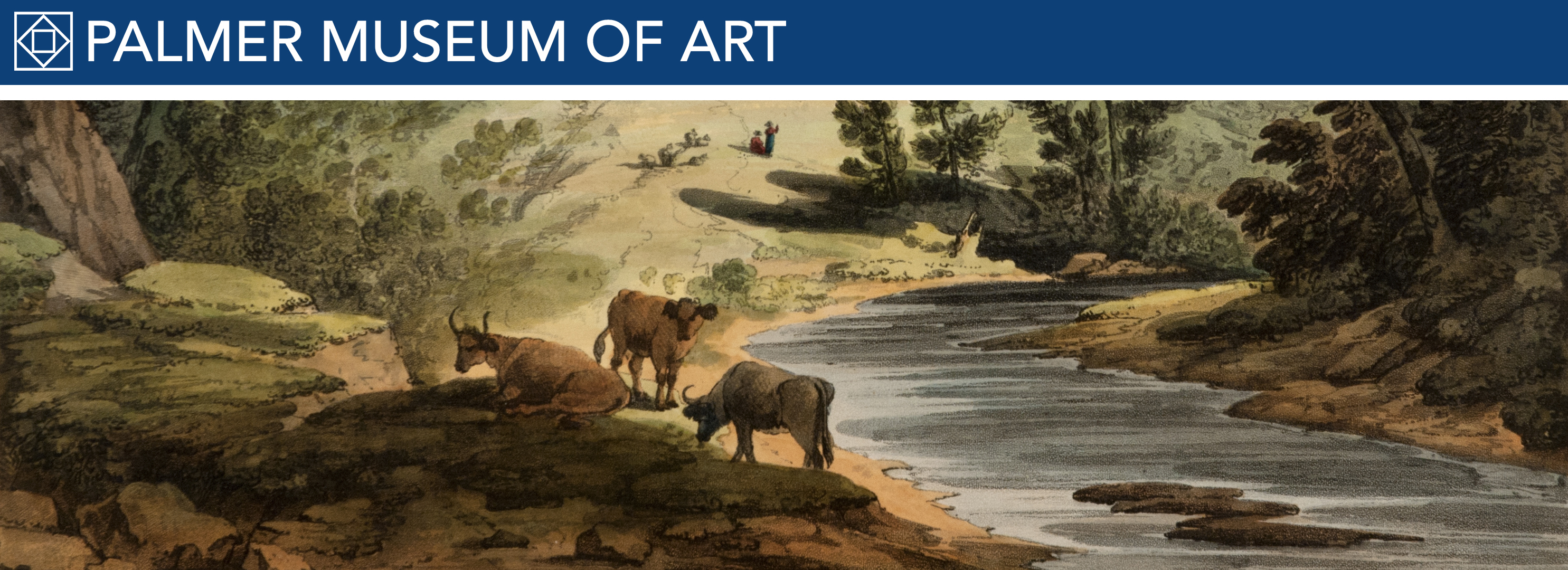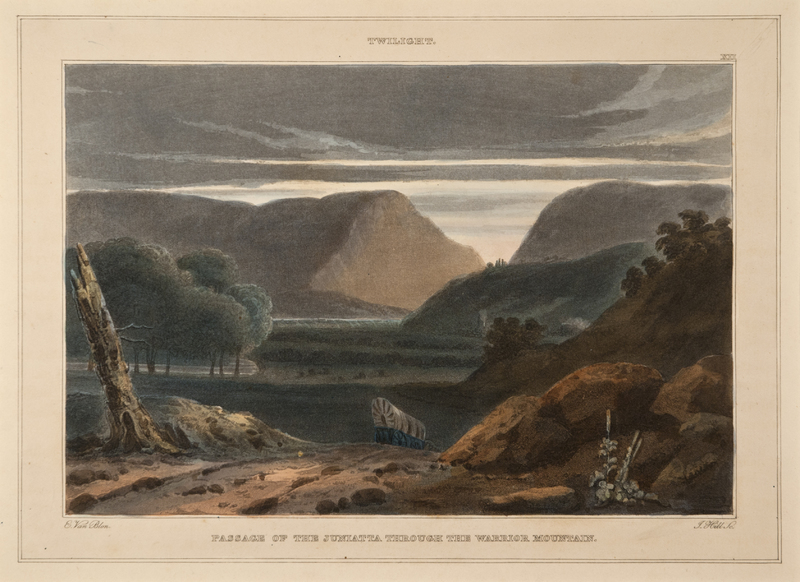Pennsylvania Scenery
John Hill
American, b. England, 1770–1850
After John Hazelhurst Boneval Latrobe (E. Van Blon)
American, 1803–1891
Passage of the Juniatta through the Warrior Mountain
Aquatint and etching with hand coloring, 7 3/8 x 10 1/8 inches
Plate 12 from Part II of Lucas’ Progressive Drawing Book
Published in 1827 by Fielding Lucas, Jr.
American, 1781–1854
Partial gift and purchase from John C. O’Connor and Ralph M. Yeager
86.601
To accompany his instructions for depicting twilight, Latrobe drew a lone Conestoga wagon—named for the Pennsylvania town just southeast of Columbia where the vehicles were thought to have been built—traveling west at dusk along the southern branch of the Juniata River, today known as the Raystown Branch. Both branches of the Juniata (as the name of the river is now spelled) provided major routes for passage through Pennsylvania’s Appalachian and Allegheny Mountains.
The composition suggests that respite for the evening might be found amidst the wisps of smoke rising in the midground, which signal the village of Bloody Run, later to be renamed Everett. The gap looming beyond is not through Warrior Mountain, as cited in the title (which in fact lies some forty miles farther south, in Maryland), but through Tussey Mountain, an eighty-mile Appalachian ridge running from Flintstone, Maryland, to Boalsburg here in Centre County.

